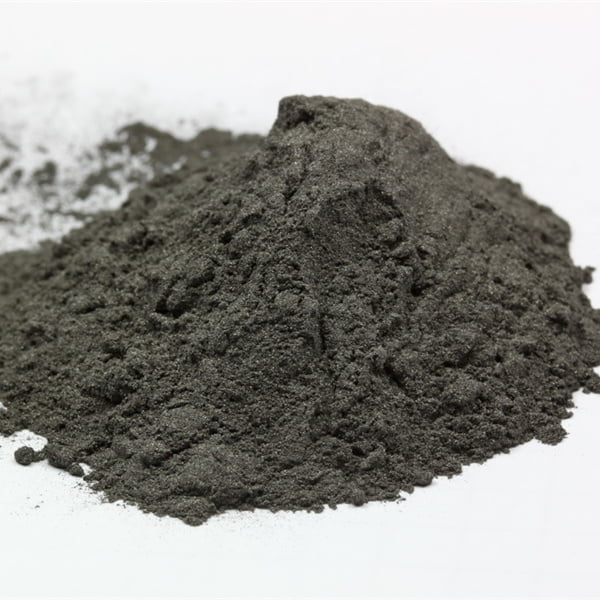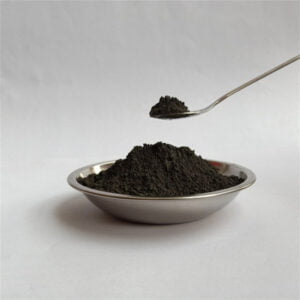What metal powders can produced by HIP
Table of Contents
Imagine crafting intricate components from a canvas of tiny metal particles. This isn’t science fiction; it’s the reality of Hot Isostatic Pressing (HIP), a revolutionary technique that transforms metal powders into high-performance parts. But what kind of metal powders are compatible with this process? Buckle up, because we’re about to embark on a journey exploring the fascinating world of HIP-ready metal powders!
What is HIP and Why Does it Matter?
Hot Isostatic Pressing (HIP) is a two-punch combo for metal powders. It subjects them to intense heat and uniform pressure simultaneously. The heat softens the particles, allowing them to deform and interlock with their neighbors. Meanwhile, the pressure ensures complete densification, eliminating internal voids and creating a near-net-shape component with exceptional mechanical properties.

Metal Powders Ideal for HIP
Not all metal powders are created equal. For a successful HIP operation, the powder needs specific characteristics. Here are ten prominent metal powders that thrive under HIP’s magic touch:
- Stainless Steels (316L, 17-4PH): The workhorses of the metal powder world, these stainless steel grades offer excellent corrosion resistance, high strength, and biocompatibility. HIP makes them even stronger and denser, perfect for applications in aerospace, medical implants, and chemical processing equipment.
- Tool Steels (M2, AISI H13): Imagine crafting razor-sharp cutting tools from a bed of tiny metal particles. That’s the power of HIP-ed tool steels. These grades boast exceptional wear resistance and hardenability, ideal for punches, dies, and molds that need to withstand constant abuse.
- Nickel-based Superalloys (Inconel 625, Haynes 282): For applications where the heat is on, literally, nickel-based superalloys are the undisputed champions. They maintain exceptional strength and creep resistance at scorching temperatures, making them ideal for jet engine components, gas turbines, and heat exchangers. HIP elevates their performance even further by ensuring minimal internal defects.
- Titanium and Titanium Alloys (Ti-6Al-4V, Gr2): Lightweight yet incredibly strong, titanium alloys are the darlings of the aerospace industry. HIP allows for the creation of complex, near-net-shape titanium parts with superior fatigue strength and weight reduction capabilities.
- Cobalt-Chromium Alloys (CoCrMo): Biocompatible and wear-resistant, cobalt-chromium alloys are the go-to material for orthopedic implants like hip and knee replacements. HIP ensures a flawless internal structure, crucial for long-term implant performance and patient well-being.
- Tungsten Carbide (WC): The king of hardness, tungsten carbide is used to create cutting tools and wear parts that can handle the most abrasive environments. HIP densifies the tungsten carbide powder, maximizing its hardness and resistance to chipping.
- Aluminum Alloys (AlSi10Mg, AA2024): Offering a compelling combination of lightweight properties and good strength, aluminum alloys are finding increasing use in the automotive and aerospace industries. HIP can improve their mechanical properties, making them even more attractive for weight-sensitive applications.
- Copper Alloys (Cu-Sn, Cu-Ni): Copper’s excellent electrical conductivity makes it a vital material for electrical components. HIP can enhance the conductivity of copper alloys while also improving their mechanical strength, making them ideal for applications like busbars and heat sinks.
- Refractory Metals (Molybdenum, Tantalum): These high-melting-point metals excel in extreme temperature environments. HIP ensures their structural integrity and minimizes internal voids, making them perfect for furnace components, rocket nozzles, and heat shields.
- Amorphous Metals (Vitreloy): With a unique glassy structure, amorphous metals offer exceptional wear resistance and elastic properties. HIP can be used to consolidate these powders into near-net-shape components for applications requiring high wear resistance and low friction.
Key Considerations for Choosing a HIP-Compatible Metal Powder
While these ten metal powders are excellent candidates for HIP, the choice ultimately depends on your specific application. Here are some key factors to consider:
- Desired Properties: What are the critical mechanical properties (strength, ductility, conductivity) you need for your final component?
- Part Geometry: HIP is ideal for complex geometries, but consider the limitations of powder flow and packing density.
- Material Availability: Not all powders are readily available in all shapes and sizes. Factor in cost and lead time.
- Environmental Regulations: Some materials may have restrictions on their use due to environmental concerns.
A Comparative Analysis of Metal Powders for HIP
The previous section highlighted ten prominent metal powders compatible with HIP. But with such a diverse selection, how do you choose the right one for your project? Here’s a comparative analysis table to shed some light:
| Feature | Stainless Steels (316L, 17-4PH) | Tool Steels (M2, AISI H13) | Nickel-Based Superalloys (Inconel 625, Haynes 282) | Titanium and Titanium Alloys (Ti-6Al-4V, Gr2) |
|---|---|---|---|---|
| Key Properties | Excellent corrosion resistance, high strength, biocompatible | Exceptional wear resistance, hardenability | High-temperature strength, creep resistance | Lightweight, high strength, good fatigue resistance |
| Applications | Aerospace, medical implants, chemical processing | Punches, dies, molds | Jet engine components, gas turbines, heat exchangers | Aerospace components, prosthetics |
| Advantages for HIP | Improved strength, density | Minimized internal defects, enhanced wear resistance | Flawless internal structure, high-temperature performance | Superior fatigue strength, weight reduction |
| Disadvantages | Can be work-harden during processing | May require higher HIP temperatures | Higher cost compared to some options | More susceptible to contamination |
| Cost | Moderate | High | High | High |
| Feature | Cobalt-Chromium Alloys (CoCrMo) | Tungsten Carbide (WC) | Aluminum Alloys (AlSi10Mg, AA2024) | Copper Alloys (Cu-Sn, Cu-Ni) | Refractory Metals (Molybdenum, Tantalum) |
|---|---|---|---|---|---|
| Key Properties | Biocompatible, wear-resistant | High hardness, abrasion resistance | Lightweight, good strength | Excellent electrical conductivity | High-melting point, high-temperature strength |
| Applications | Orthopedic implants | Cutting tools, wear parts | Automotive, aerospace components | Busbars, heat sinks | Furnace components, rocket nozzles, heat shields |
| Advantages for HIP | Ensures flawless internal structure | Maximized hardness, minimized chipping | Improved mechanical properties | Enhanced conductivity and strength | Minimized internal voids, high-temperature performance |
| Disadvantages | Limited printability for complex shapes | Brittle compared to some options | Lower strength compared to some steels | Lower melting point compared to some options | Limited availability of some grades |
| Cost | High | High | Moderate | Moderate | High |
Beyond the Table: Additional Considerations
This table provides a starting point for your selection process. Here are some additional factors to consider:
- Powder Characteristics: Particle size, morphology (shape), and flowability can impact packing density and final component properties.
- Surface Finish Requirements: HIP can improve surface finish, but some applications may require additional post-processing.
- Environmental Impact: Consider the environmental footprint of material extraction, processing, and disposal.
the Potential of Metal Powders with HIP
The synergy between HIP and compatible metal powders unlocks a world of possibilities. From lightweight aerospace components to wear-resistant cutting tools, this powerful combination pushes the boundaries of manufacturing. By understanding the unique properties of each metal powder and carefully considering your project requirements, you can harness the power of HIP to create high-performance parts that redefine what’s possible.

FAQ
Q: What are the advantages of using HIP with metal powders?
A: HIP offers several advantages, including:
- Improved density and elimination of internal voids
- Enhanced mechanical properties like strength, fatigue resistance, and wear resistance
- Production of complex near-net-shape components
- Minimization of residual stresses
Q: Are there any limitations to using HIP with metal powders?
A: Some limitations to consider include:
- Higher processing costs compared to traditional techniques
- Size limitations for certain components
- Potential for material degradation at high processing temperatures
Q: How do I choose the right metal powder for HIP?
A: The choice depends on your specific application. Consider the desired properties, part geometry, material availability, and environmental regulations.
Q: What is Hot Isostatic Pressing (HIP)?
A: Hot Isostatic Pressing (HIP) is a post-processing technique used with metal powders. It subjects the powder to high temperatures and uniform pressure simultaneously. The heat softens the particles, allowing them to deform and interlock with each other. The pressure ensures complete densification, eliminating internal voids and creating a near-net-shape component with exceptional mechanical properties.
Q: What are the advantages of using HIP with metal powders?
A: HIP offers several advantages, including:
- Improved density and elimination of internal voids: This leads to stronger and more predictable mechanical properties.
- Enhanced mechanical properties: HIP can improve properties like strength, fatigue resistance, wear resistance, and overall structural integrity.
- Production of complex near-net-shape components: HIP allows for the creation of intricate shapes with minimal post-processing requirements.
- Minimization of residual stresses: The high pressure during HIP helps to relieve residual stresses introduced during powder production or shaping processes.
Q: Are there any limitations to using HIP with metal powders?
A: Some limitations to consider include:
- Higher processing costs: Compared to traditional techniques like machining or casting, HIP can be more expensive due to the specialized equipment and processing parameters required.
- Size limitations for certain components: The size of components that can be processed with HIP is limited by the capacity of the HIP vessel.
- Potential for material degradation at high processing temperatures: Some metal powders may experience undesirable changes in microstructure or properties at the high temperatures used in HIP.
Share On
MET3DP Technology Co., LTD is a leading provider of additive manufacturing solutions headquartered in Qingdao, China. Our company specializes in 3D printing equipment and high-performance metal powders for industrial applications.
Inquiry to get best price and customized Solution for your business!
Related Articles
About Met3DP
Recent Update
Our Product
CONTACT US
Any questions? Send us message now! We’ll serve your request with a whole team after receiving your message.

Metal Powders for 3D Printing and Additive Manufacturing
COMPANY
PRODUCT
cONTACT INFO
- Qingdao City, Shandong, China
- [email protected]
- [email protected]
- +86 19116340731

















